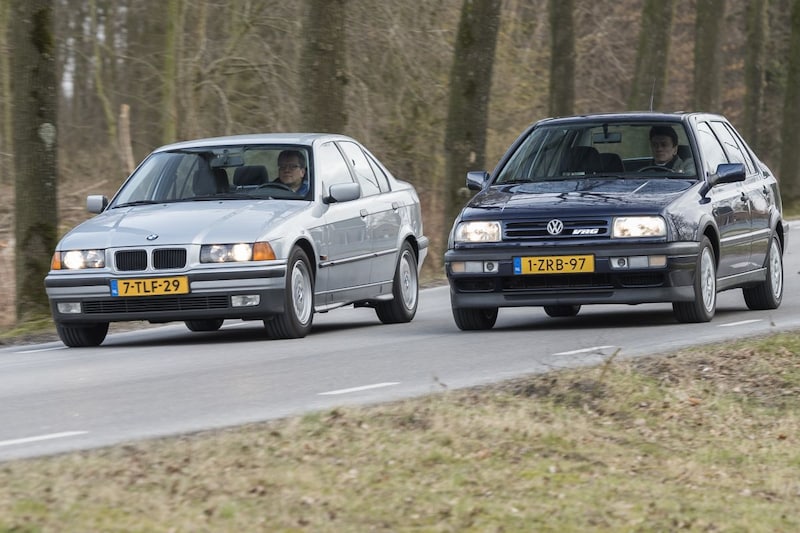
You will hardly find a sedan with only a petrol engine in the price lists anymore. Let alone one with a six-cylinder engine. In the previous decade they were still available with a combustion engine, but it was often a simmering three-cylinder engine. How different it was thirty years ago! Almost every volume brand had middle class cars with a sweet-sounding six-cylinder under the hood. In a nostalgic mood, we therefore listen to a BMW 323i and a Volkswagen Vento VR6, direct competitors from three decades ago.
The more cylinders an engine has, the quieter it makes it. That general idea has undoubtedly been valid for a long time. Idle a Lexus V8 or rev a classic Jaguar V12, and the evidence for the statement is reflected in seemingly dormant decibel meters. However, whisper silence has now also arrived in lower car classes. Because yes, time passes, technology advances and causes sacred houses to fall as if they were built of playing cards. For example, after starting the BMW 323i from 1996 and the Volkswagen Vento VR6 from 1994, we have to conclude that their beautifully running six-cylinders make themselves heard more emphatically than the first modern three-cylinder engine. Of course, noise reduction is an excellent development, because not everyone wants to hear how a car engine does its work.
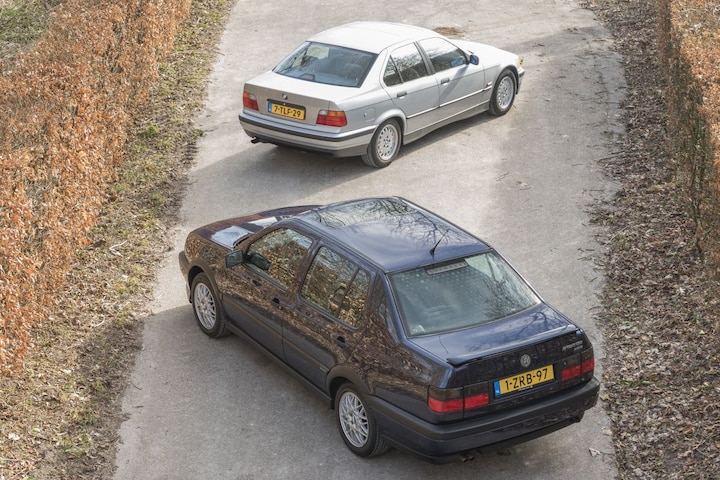
In the case of the two youngtimers that are performing today, however, the sonorous sound cannot be loud enough for us – within the limits of what is reasonable, of course. Listening to BMW’s famous inline-six and Volkswagen’s acclaimed VR6 is like hearing the voices of old friends. Forgive us for the hackneyed term, but the soundtrack is heart-warming in both cases. A six-cylinder in a middle class sedan was less special in the early 1990s than you might think now. BMW had of course had such cars for years. However, the 3 Series was soon joined by six-cylinder versions of the Audi 80, Mercedes-Benz 190 and C-class, Alfa 155, Opel Vectra, Mazda 626 and Xedos 6, Mitsubishi Galant and, not to forget, that other four-door Volkswagen with VR6, the Passat. Later, the Renault Laguna, Ford Mondeo, Citroën Xantia and Saab 900 were added. What a choice!
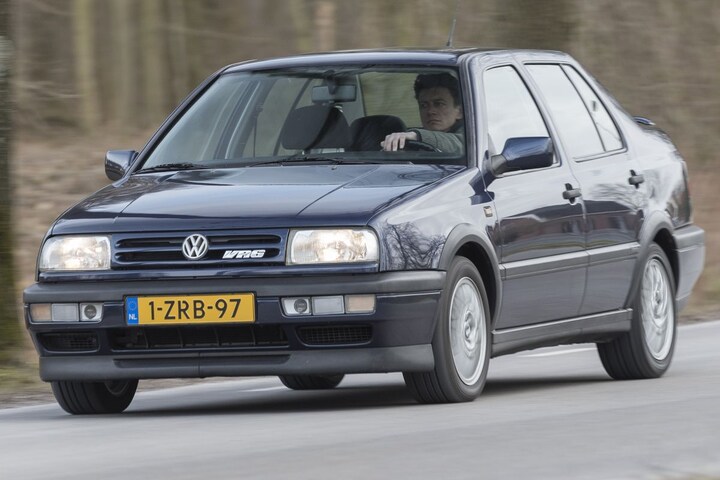
The reason for the nostalgic tour we are taking today is the dark blue Volkswagen Vento with the designation VR6 on the trunk lid. A true one trouvaille, as the French so beautifully say: a find among thousands. A neat Vento is a sight in itself; a Vento VR6 in original condition, with very few kilometers on the clock, is a thousandfold. It’s the needle that pricked us when we leaned innocently against the haystack. The specialist in youngtimers where we found it included the car imported from Germany in his sales collection due to its rarity, but during the day of the report he increasingly wondered whether he should just keep it himself. Yes, we would say if we were in his shoes, if only to regularly relive the glorious test period of late 1993 with Pon’s original test car. Unforgettable was the sensation of driving that apparently ordinary sedan – only the purple color stood out – and driving the snot in the eyes of all other traffic. The massive push in the back, the flexibility of the civilized growling, very special VR6 engine, it was all incredibly impressive. Today let’s see if we can experience the Vento like this again. There is an important difference between the cars of then and now: Robert-Jan’s has a four-speed automatic transmission, the test car had a five-speed manual transmission.
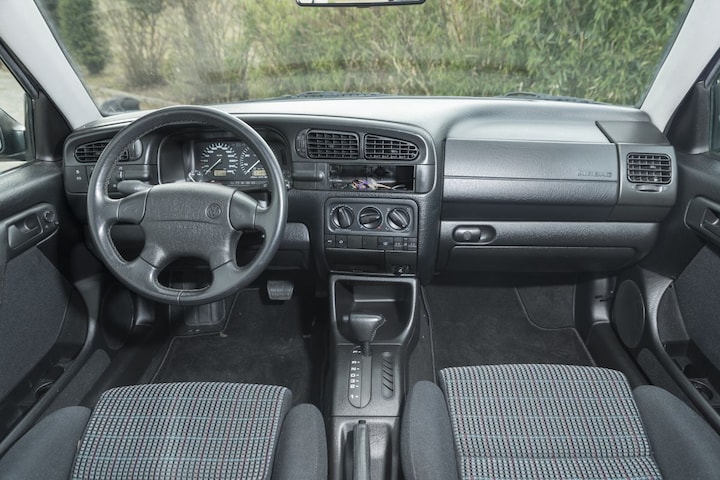
The opponent for this test was quickly thought of, but was not easily found; Six-cylinder BMWs of the E36 model series that are in – and this is crucial – undamaged condition are rarer than birds with a fear of heights. Most 325i’s, for example, will have found their Waterloo in the hands of people who started racing, drifting or tuning them. It became a silver-gray 323i automatic, apparently in new condition. Considering the specifications, it is the best possible opponent for the Vento VR6, although the 320i was if you take the purchase prices at the time as a starting point.

The Volkswagen Vento, launched in 1992, was always said to be more than a Golf with a butt. However, to fulfill that promise, they should have kept the car on the drawing board a little longer in Wolfsburg. It is simply a Golf with an (immense) trunk and not, as the marketers might have wanted the public to believe, a small Passat (for the crisis manager, according to the TV campaign at the time). The pronounced wedge shape makes the back visually heavy. You can imagine the front wheels lifting off the ground when you fill the trunk to the brim with holiday luggage. That doesn’t matter, because that ass makes this Volkswagen extremely rare. In Wolfsburg they also worked hard on the decoration of the VR6; see the extra lighting in the front bumper, the alloy wheels and the spoiler on the back. A cool thing, like that!
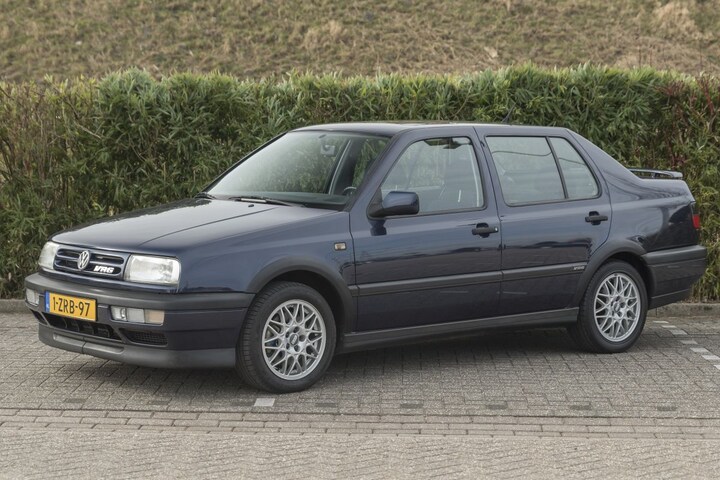
It’s a good thing that the BMW has alloy wheels available at an additional cost, otherwise the visual impact of both cars would have gone straight to the Volkswagen. Precisely because the Golf has become a sedan as a Vento, it grew to the size of the BMW 3-series, although according to the books it operates in a lower car class. In fact, the Passat was (and still is) Volkswagen’s representative at the time in what we now call the D-segment.
The BMW E36 is still a beautiful and timeless creation, which was launched at the time with the beautiful campaign ‘Other Times, Other BMWs’ was introduced. That’s how it was. The 3 Series, introduced in 1990, was a major departure in style from the instantly classic E30 with its angular profile. The E36 makes no compromises, nothing detonates, it just beats from front to back.
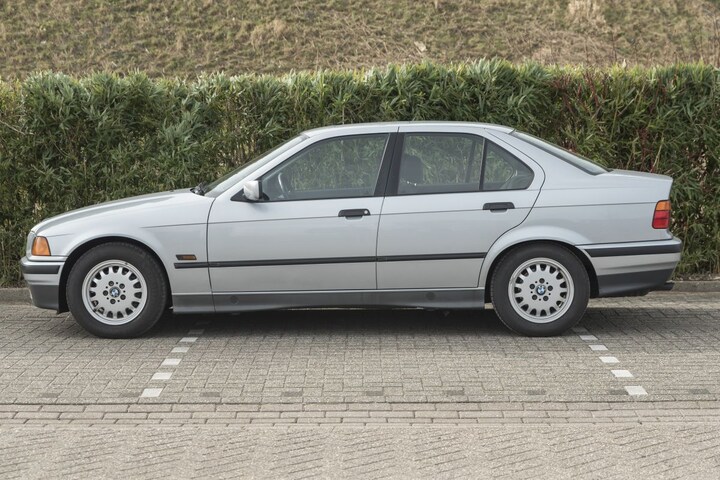
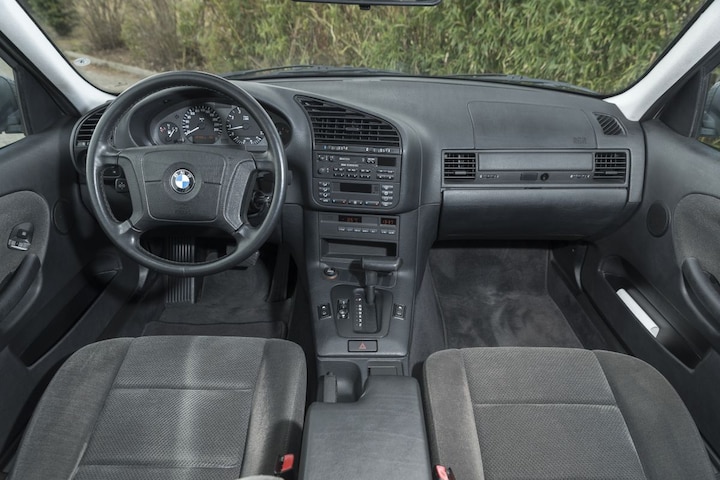
Giving the Vento the 174bhp 2.8-litre six-cylinder upgraded it into a capable competitor to the equally expensive 320i and the equally powerful 323i (170bhp). Robert-Jan’s VR6 does not disappoint. Although the car has stood still for a while, it is very alert and accelerates very smoothly and with a nice full sound. Too bad it’s an automatic, otherwise the impact of the VR6 would have been even more noticeable; Now the Vento is above all a comfortable and quiet touring car, which makes it wonderful to rack up the miles. At 120 km/h the rev counter shows 3,000 revolutions. Not a little, but there is no unrest. The six-cylinder with the small block angle, which can also be described as an in-line engine with staggered cylinders, turns around with playful ease. What a wonderful and still impressive engine, with a great power reserve.

Wonderful inline-six in the 323i
The BMW 323i feels as strong engine-wise as the Vento VR6, which it is. The BMW itself is a completely different car, if only because of the unique sound of the six-cylinder in-line engine. Among all its competitors, BMW was the only one in this segment, together with Mercedes, to build inline-six engines. Logical, because the other cars are front-wheel drive and an inline engine cannot usually be built transversely (the Princess 2200 from the 1970s is an exception to that rule!). The 323i zooms over the road even more than the Vento VR6, and does so with a sovereignty that commands respect. The 2.5-liter engine runs about a thousand revolutions less than that of the Volkswagen, speaking of quietness. The automatic gearboxes do their job well, the BMW’s has the advantage of an extra gear (five instead of four), while it also shifts more smoothly. In the BMW, the automatic transmission itself is also more appropriate than in the Volkswagen, which you would rather drive with a manual gearbox, because it transforms the car into a nice sports sedan.
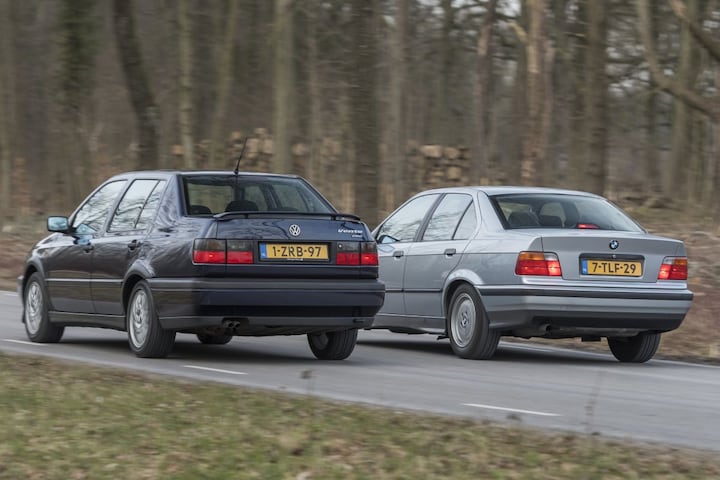
The handling is of a high standard in both cars. They are pleasantly stable and feel confident when cornering. The BMW moves more evenly over bumps; the Volkswagen sways slightly with its relatively heavier nose. The seating behind the wheel is excellent in both cars, on seats of the same level; the BMW scores more points here because of the deeper seat. At the back, the Vento is the most spacious of the two. Here its front-wheel drive makes itself felt in a positive way. The trunk is also considerably larger, which makes it very practical in this story.
However, with every kilometer we drive, our understanding grows that the BMW was no less than approximately €10,000 more expensive than the Volkswagen at the time. It is clearly a car from a higher class. Take, for example, the interior of the Vento, which is more luxuriously equipped as standard than that of the 323i (on-board computer and sports seats), but in terms of atmosphere, which is mainly determined by the design and choice of materials, it cannot be in the shadow of its opponent. Munich. And this applies to almost everything: as a VR6, the Vento bravely joined the ‘big boys’, but actually needed more than a big engine.
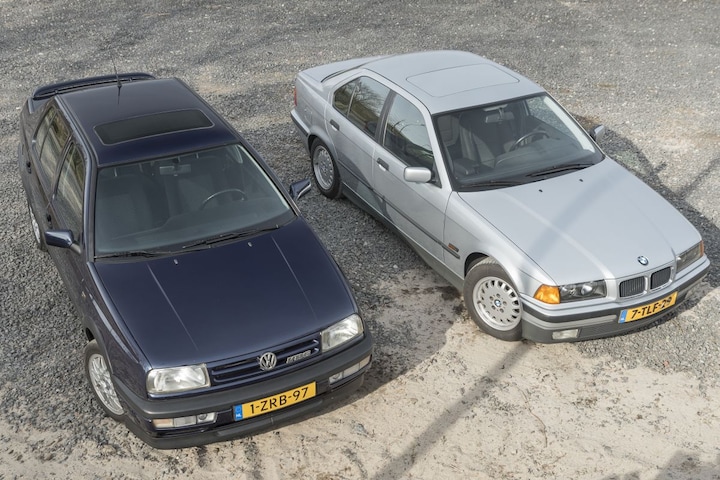
This story was previously published in AutoWeek 17 2018. If you are a logged in user, you can download the PDF from the magazine for free via that link.
– Thanks for information from Autoweek.nl